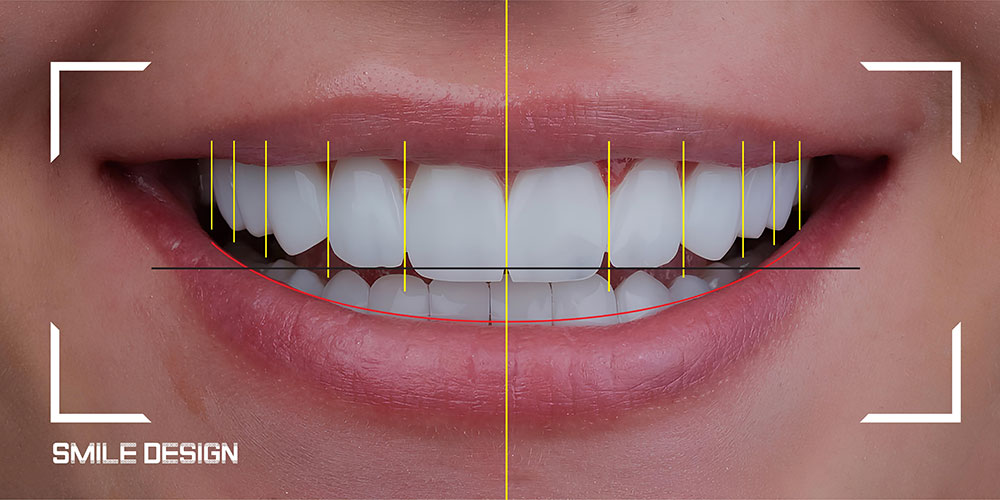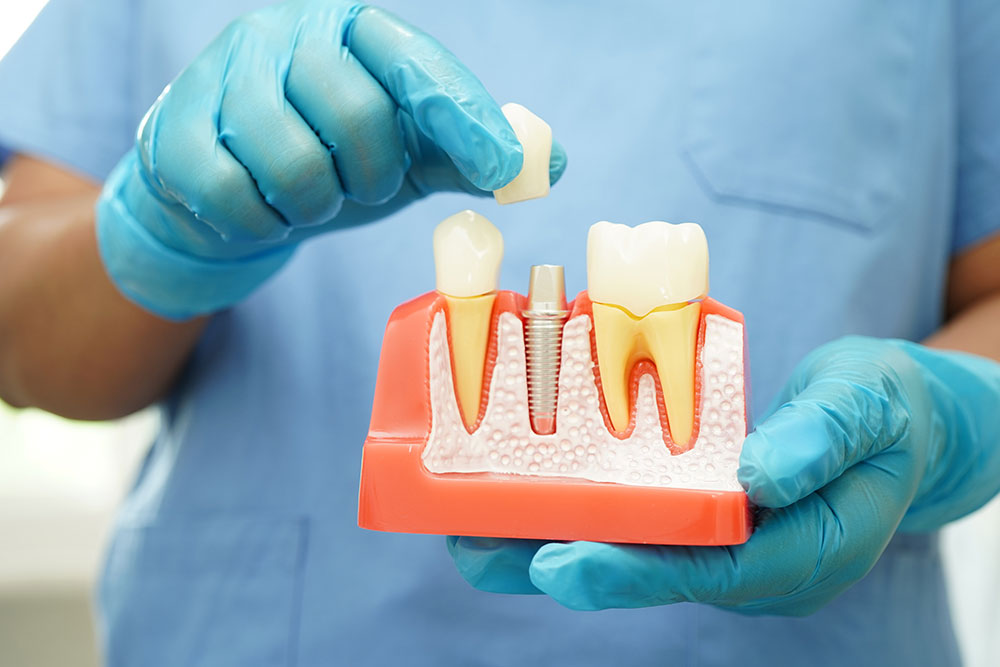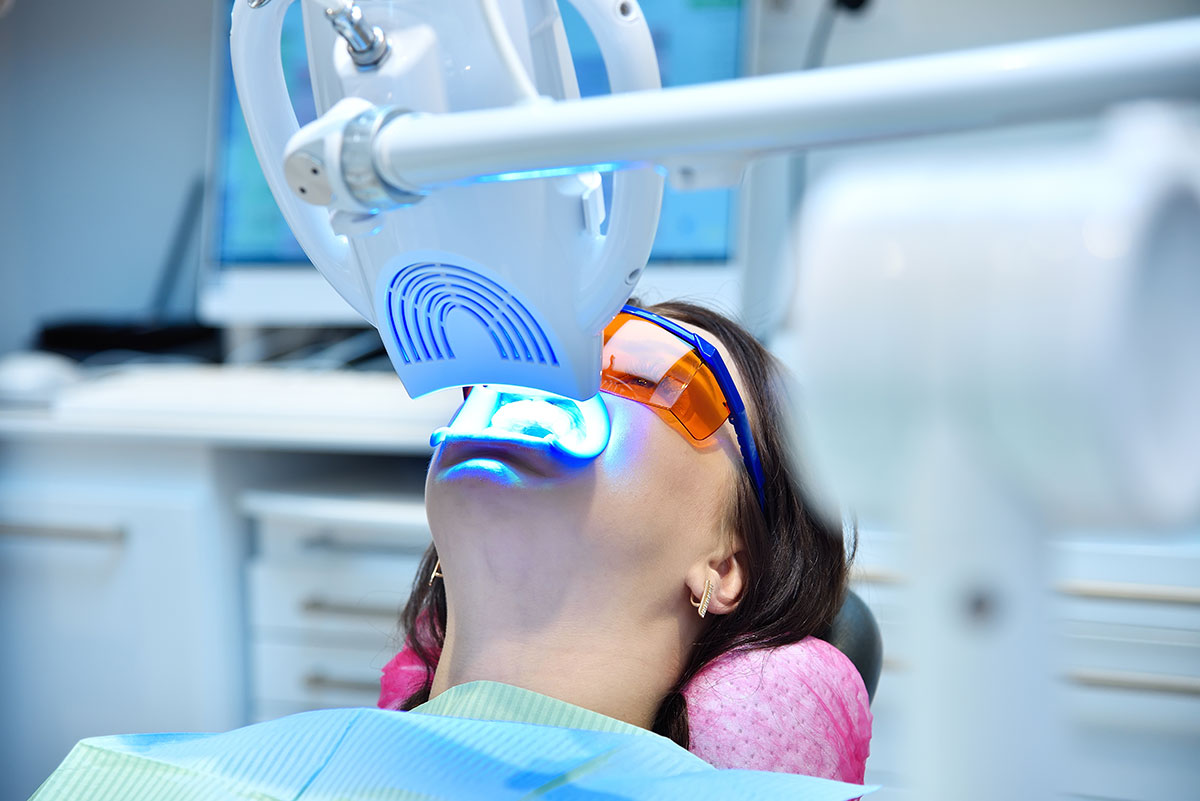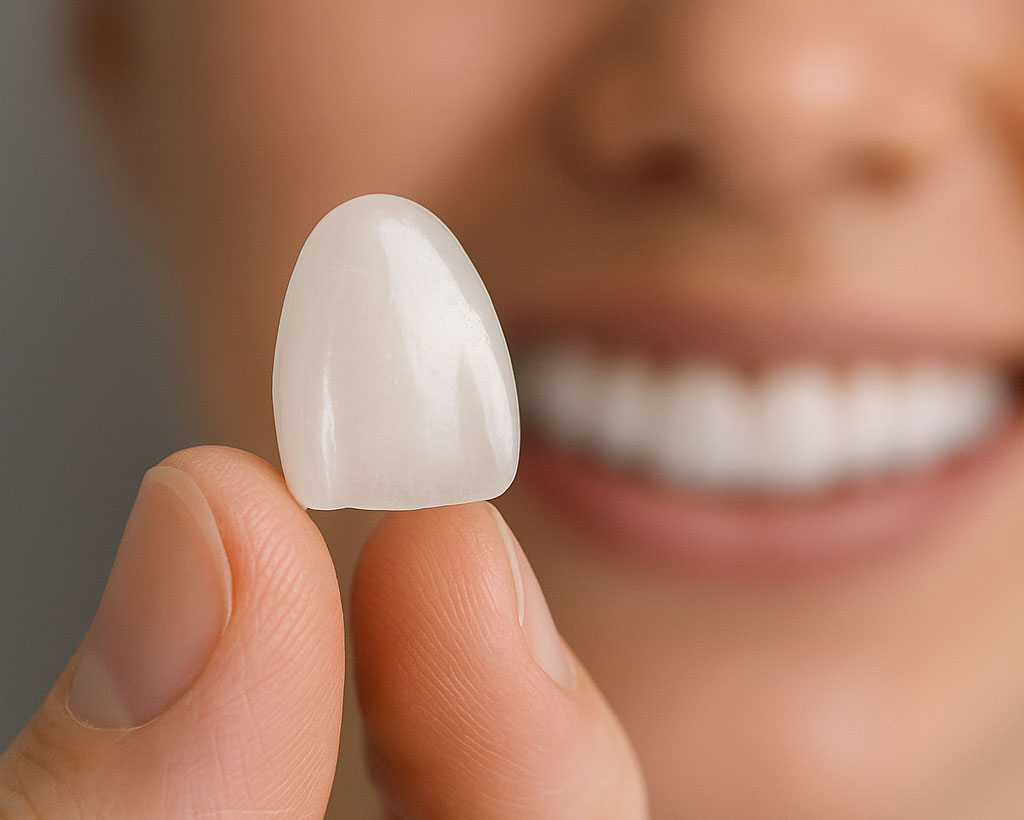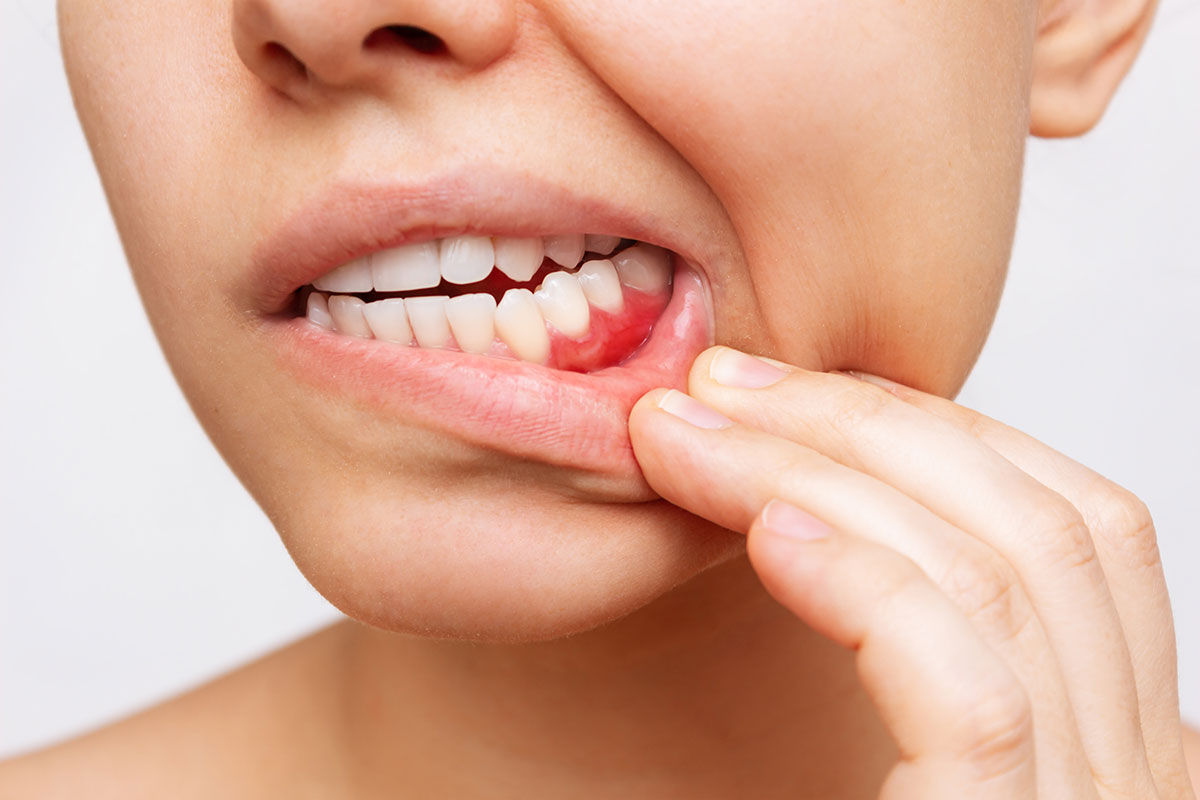Dental veneers are one of the most popular procedures in aesthetic dentistry. This method, which is performed by bonding thin porcelain or composite layers to the tooth surface, quickly improves the form, color and symmetry of the teeth. At Klinik34, the lamina veneers process is based on proper planning, minimally invasive preparation and biocompatible material selection. Below, we have detailed what lamina veneers are, who they are suitable for, the materials used and the process steps.
1. Lamina Veneer
Lamina veneer is the process of fixing thin sheets, usually between 0.3-0.7 mm in thickness depending on the tooth enamel, to the tooth surface. Nowadays, laminates can be easily applied on both anterior teeth and lateral incisors. While composite laminates offer a more economical option, porcelain laminates provide the advantage of long life and natural light transmission.
2. Indications
Lamina veneers are ideal for patients who are unhappy with their tooth color and want to quickly correct minor crowding or symmetry disorders. They also offer an effective treatment for cracked, stained or isolated tooth deformities. However, patients with a history of gum disease, caries, abrasion and teeth grinding (bruxism) should have these problems treated first. Orthodontic treatment or more extensive restorations may be preferred in cases of excessive tooth loss or excessive curvature of the teeth.
- Porcelain Laminates (e.max, Lava Ultimate): High durability, natural enamel-like aesthetics, long life.
- Composite Lamination: Fast application, repairability, lower cost.
- Zirconium Assisted Veneers: Although its thickness is slightly higher, it is preferred in cases requiring extra strength.
- Adhesion Systems: Primers and photopolymerized composite cements containing 10-P-MDP offer excellent bonding and color stability.
4. Process Stages
- Clinical and Digital Examination: First, gingival, tooth and facial symmetry is evaluated with photography and 3D scanning (intraoral scanner).
- Digital Design (Mock-up): With Smile design software, the ideal tooth form and size are planned in a virtual environment. The design is tested in the mouth with temporary material and patient and physician approval is obtained.
- Minimal Preparation: A place for the lamina is prepared by removing a maximum of 0.5 mm of enamel tissue (minimally invasive). The tooth surface is purified and micro-roughened.
- Laboratory Phase: Transparent molds and digital measurements are sent to the laboratory for the production of porcelain laminates.
- Bonding: After the tooth surface is prepared with acid etch, the silanized laminates are carefully fixed with composite cement. Excess cement is removed, light polymerized and the surface polished.
5. Maintenance and Longevity
- Daily Oral Hygiene: Brushing with fluoride toothpaste and a soft-bristled brush, using interdental brushes or flossing.
- Professional Cleaning: Scaling and biofilm cleaning every six months, surface polishing.
- Installing the Protective Plate: In patients at risk of bruxism, the use of night plates helps to protect the enamel tissue at the edge of the veneers.
- Nutrition Habits: Limiting abrasive acidic drinks and hard foods, avoiding habits that can put stress on the edges of the veneers.
6. Advantages and Disadvantages
Advantages
- Fast results and aesthetic improvement in one session
- Great preservation of tooth tissue
- Vivid image with natural light transmission
- Materials with long life and high color stability
Disadvantages:
- Excessive gum recession can expose the tooth tip
- Fracture risk in bruxism
- Prices close to full porcelain crowns in terms of cost
- Application in isolated cases, not in all teeth
7. Clinic34's Approach and Conclusion
At Klinik34, lamina dental veneers are based on digital planning, minimal preparation and biocompatible material selection. Our specialist physicians evaluate facial symmetry, smile line and gum harmony holistically in each case. The patient's expectations are clarified in the mock-up phase and perfectly matched laminae are produced in cooperation with the laboratory. The result An aesthetic result that combines delicacy, durability and naturalness and can be used comfortably for years

